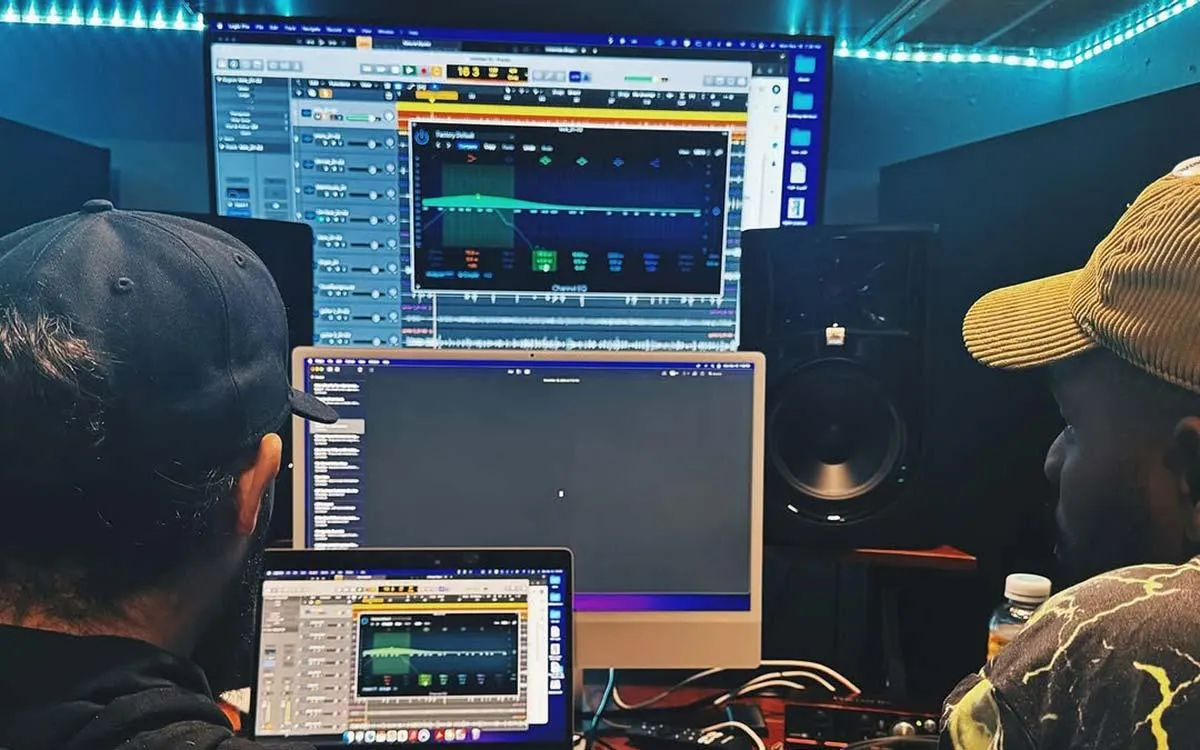Philly Recording School Blog
25 Years of Excellence
Building Your First Home Studio: What You Need to Know
by illiad | March 17, 2025

Setting up your first home studio can be an exciting yet overwhelming experience, especially if you’re diving into audio engineering and music production for the first time. Whether you're an aspiring musician, podcaster, or producer, creating a space that’s both functional and inspiring is essential to producing high-quality sound.
In this guide, we’ll walk you through the key steps to building a home studio and provide you with the tools you need to create your own professional audio space.
Choosing the Right Space for Your Home Studio
The first step in building a home studio is selecting the right space. Ideally, choose a quiet room away from distractions and external noise. Even a small room can work, as long as it's well-ventilated and has enough space for your gear. Room acoustics are crucial for clean recordings and accurate mixes.
To minimize echo and sound reflection, use carpets, thick curtains, and foam panels on the walls. Soundproofing can be costly, but these simple strategies can make a big difference.
Microphones: Selecting the Right One for Your Needs
As you dive into audio engineering and music production, one of the most important pieces of equipment you'll need is a quality microphone. Your choice will depend on what you're recording.
For vocals, a condenser microphone is a great choice because it picks up a wide range of frequencies and provides a natural, clear sound. For instruments or podcasting, a dynamic microphone may be a better option, as it can handle higher sound pressure levels and is more durable.
Audio Interface: Connecting Your Gear to Your Computer
Your audio interface connects microphones, instruments, and your computer, converting analog signals into digital for your DAW (Digital Audio Workstation). When selecting an interface, ensure it has enough inputs and outputs for your needs. Popular choices for home studios include Focusrite, PreSonus, and Universal Audio.
Look for interfaces with quality preamps, low-latency performance, and compatibility with your DAW. Beginners can start with a budget-friendly option and upgrade as they grow.
Headphones and Studio Monitors: Essential for Mixing
For audio engineering and music production, quality headphones and studio monitors are essential. Headphones are great for tracking and detailed listening, but may not offer the most accurate mix. Closed-back headphones are best for recording, while open-back ones are better for mixing and mastering, offering a natural sound.
Studio monitors provide a flat, accurate sound representation. Popular beginner options include KRK, Yamaha, and Audio-Technica monitors. Make sure to position them correctly to avoid sound issues.
Acoustic Treatment: Why It Matters
No matter how high-end your gear is, poor room acoustics can affect your recordings. Acoustic treatment includes foam panels, bass traps, and diffusers placed in key areas to reduce echo, reverb, and sound reflection.
Focus on treating first reflection points and corners where sound builds up most. A basic setup could involve foam on walls and bass traps in corners. This helps create a balanced sound environment for accurate mixing and mastering of music or podcasts.
Digital Audio Workstation (DAW): Your Creative Hub
A Digital Audio Workstation (DAW) is the software you’ll use to record, edit, mix, and produce music. Popular DAWs for home studios include Pro Tools, Ableton Live, Logic Pro X, and FL Studio.
Each has unique strengths, so choose one that fits your workflow. Beginners can start with affordable options like GarageBand or Ableton Live Intro and later upgrade to full versions as their audio engineering and music production skills grow.
MIDI Controllers and Virtual Instruments
For music producers, a MIDI controller is a must-have tool for creating melodies, beats, and electronic sounds. MIDI controllers are used to trigger virtual instruments (VSTs) and can enhance your production workflow. Many MIDI controllers come with built-in pads, knobs, and keys, offering a tactile way to create music in your DAW.
If you’re producing electronic music, you’ll also want to explore virtual instruments like synths, drum machines, and samplers to add more variety and depth to your compositions.
Philly Recording School: Access to Professional Gear and Studio Space
One of the most beneficial aspects of attending Philly Recording School is access to state-of-the-art equipment and professional studio spaces. Whether you're just starting out or you're a seasoned producer, we provides students with hands-on experience with industry-standard gear, including high-end microphones, audio interfaces, mixing consoles, and monitoring systems.
At Philly Recording School, students also have the opportunity to work in fully equipped studios designed to simulate real-world production environments. This is invaluable for those who are looking to build confidence and skill in
audio engineering and music production .You’ll not only get to work with the best equipment but also receive expert guidance from experienced instructors who know the ins and outs of the industry.
Ready to Build Your Home Studio?
Building your first home studio doesn’t have to be intimidating. By carefully selecting the right gear and treating your space for optimal acoustics, you can create a recording environment that allows you to produce professional-level content. If you’re serious about learning audio engineering and music production, consider enrolling in programs like those offered at Philly Recording School. Here, you’ll gain practical experience with the latest equipment and have the chance to work in a professional setting—setting you up for success in your creative endeavors.
Ready to take the plunge into the world of music production? With the right tools, knowledge, and dedication, your home studio can become the launchpad for your next big project.
Lil' Drummaboy Recordings
818 South Street, Philadelphia, PA 19147
Tel: (215) 574-1400

